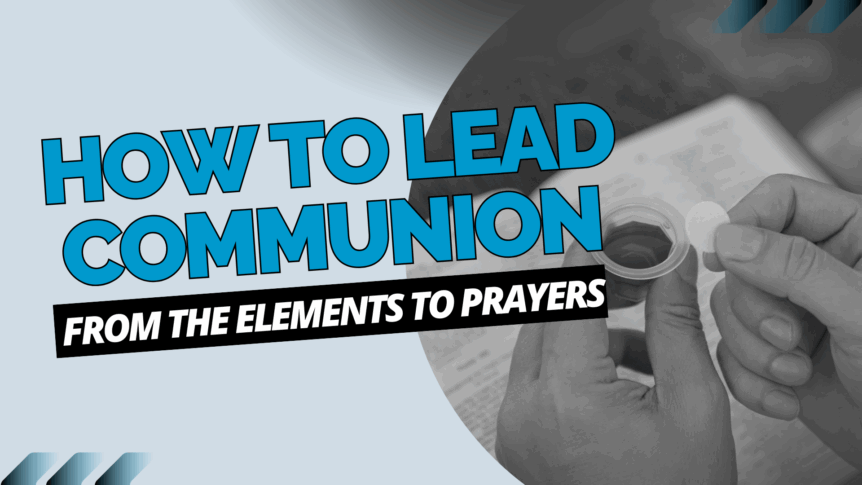Communion is a special time to remember the Lord’s sacrificial death, often involving personal reflection. We follow in Jesus’ footsteps at the Last Supper, as the Lord eats and broke bread and shares one last Passover meal with his disciples. The bread is Christ’s body, broken for us, and the Wine (or grape juice) represents His blood poured out. We’ll talk here about how to lead communion, such as what elements to use and what prayers to say.
Allow the Holy Spirit to guide you in this moment of reflection. It’s not often we pause and remember all He has done on the cross. Some churches may partake in communion weekly, some monthly, and others around special seasons such as Christmas or Easter. However your church decides to partake, we hope to help guide you on how to lead this moment.
“In the same way, after supper he took the cup, saying, “This cup is the new covenant in my blood; do this, whenever you drink it, in remembrance of me.” For whenever you eat this bread and drink this cup, you proclaim the Lord’s death until he comes. So then, whoever eats the bread or drinks the cup of the Lord in an unworthy manner will be guilty of sinning against the body and blood of the Lord.” 1 Corinthians 11:25-27
Estimated reading time: 13 minutes
Table of contents
Why We Take Communion
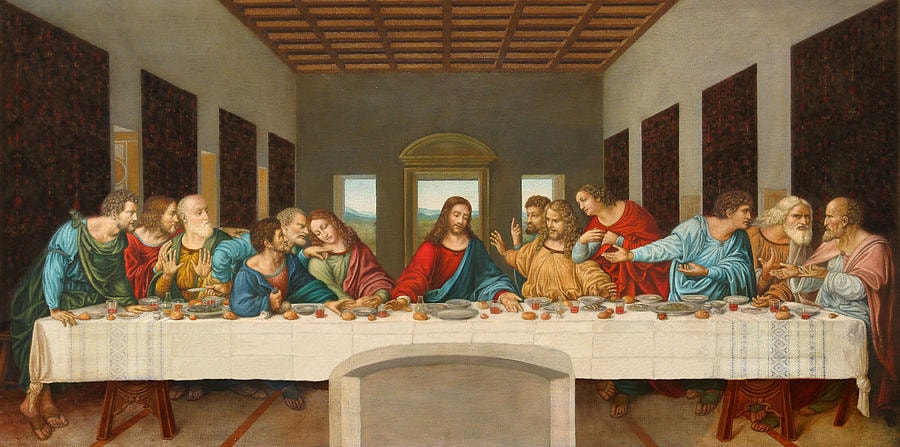
The primary purpose of Communion is to take time to remember all that the Lord did for us. It is a time to worship and give thanks for the forgiveness of our sins and the new life and relationship that we have with Jesus Christ. Jesus initiated this time of remembrance just before His death.
In the Old Testament believers were called to remember the faithfulness of God through celebrations such as Passover. In the New Testament, this is what Jesus wanted us to remember, His powerful love and forgiveness of our sins.
Global Participation in Communion:
Worldwide, a near majority (49%) of 2017–18 GCMS respondents reported that in the last year, they had participated in communion at least once a quarter, which is, again, standard for many settings. However, nearly one in five survey participants (19%) shared that in the last 12 months, they had taken communion more often (almost every week, every week, or more than once a week).
To Remember Jesus
“…Do this in remembrance of me.” (Luke 22:19 ESV)
Shockingly, we do need a way to remember Christ, but we are forgetful sheep in need of a way to think afresh about what he did for us on his cross. He did not give the church art or imagery or icons to remember him, but he did give us the bread and cup. So one way to receive communion is to focus on the overall story of Christ. Talk about the brokenness of the world, God’s heart to save us sinners, and the coming of Christ to reconcile the world to himself by his blood.

To Recall the Incarnation
“…This is my body…” (Matthew 26:26 ESV)
Communion provides an excellent opportunity to celebrate for the bread is a reminder, a representation, of his body broken for us. Recall how the eternal word became flesh and dwelt among us. Talk about his humanity, how he came to relate to the very humans he created. Talk about how God’s intention for humankind, that we would have dominion over the creation, was lost through sin, but that Christ came as the perfect man to make a new humanity.
To Remember Jesus’ Death
“…This is my blood…” (Matthew 26:28 ESV)
Believers are often feeling refreshed when thinking of the death of Christ. I’ve never thought we need to sensationalize it or dress it up, the simple and truthful details surrounding the death of Jesus will suffice. The beatings, the torment, the mockery, the physical affliction he endured on the cross, the darkness, the aloneness; all of it speaks loudly of the love of God for his people. To talk of the event of Jesus’ death helps bring the point of the gospel back to a fresh place in people’s minds.
To Remember the New Community He Created
“…Drink of it, all of you…” (Matthew 26:27 ESV)
When Jesus died and then ascended, he created a new humanity. This new humanity was seen a little during the last supper, and in every instance of it since. As they gathered, and as we gather, eating the same bread and drinking from the same cup, we are reminded of our unity to one another, a unity provided for by the blood of Jesus. Celebrate how Christ’s blood made way for Jew and Gentile, male and female, slave and free to be brought together. Rejoice over how the wall of separation between humans has been destroyed by Christ’s blood.
To Celebrate the Forgiveness of Our Sins
“…Poured out for many for the forgiveness of sins.” (Matthew 26:28 ESV)
Communion is an opportunity to recall the forgiveness of sins provided for us in the blood of Jesus. People battle the self every single day. We are in need of grace. Constantly, we must hear and know and receive assurance that our sin has been dealt with by our God. To know that our sins have been put away by the Lord is all important. We never tire of hearing that our sin has been put away from us as far as the east is from the west. To hear how Christ consumed our sin into his body while posted on the cross is cause for great rejoicing and delight.
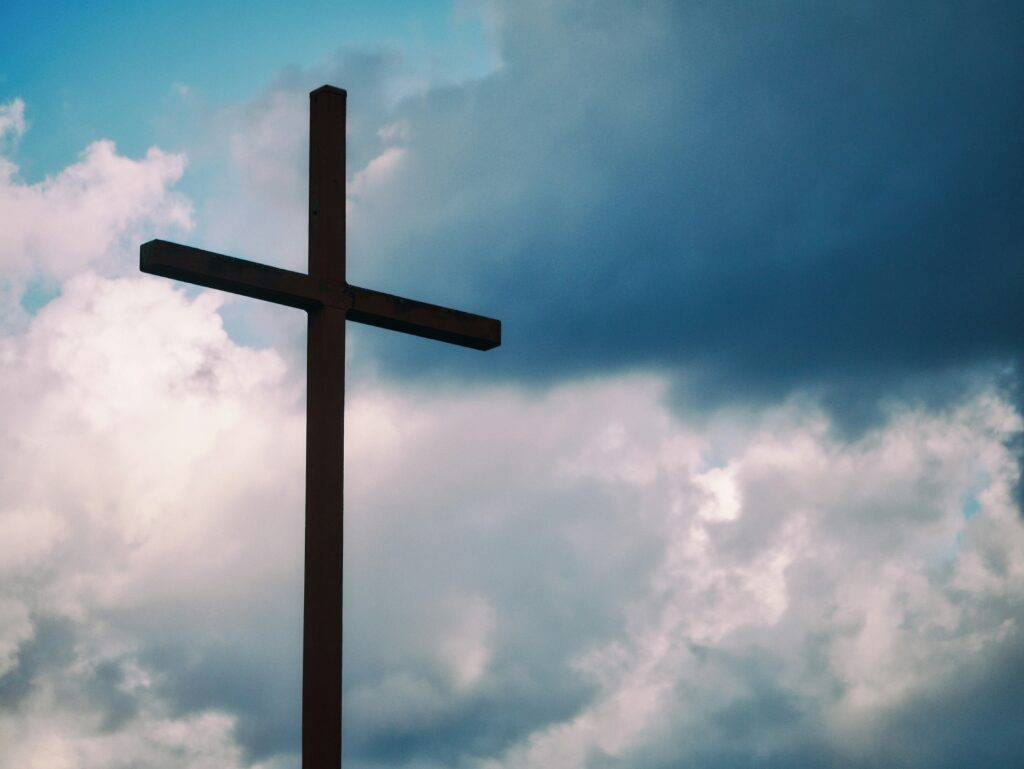
To Refocus on His Mission
“…Which is poured out for many…” (Matthew 26:28 ESV)
Communion is also a great chance for the church to refocus on the mission Christ gave to us. When he shed his blood, it was for the world. “God so loved the world he gave his only Son, that whoever believes in him should not perish but have eternal life (John 3:16). To hold the bread and cup is a privilege, one afforded to us because the gospel came to our ears. As we hold them, we are holding a message the world needs to receive. Allow the time of celebration to reflect the mission Christ began there on his cross.
To Glory in the New Covenant
“…This cup that is poured out for you is the new covenant in my blood.” (Luke 22:20 ESV)
Many of us struggle along through life trying hard to obey God. Many have a relationship with God today that bears a striking resemblance to the Old Covenant. Through a constant breaking of the law, they feel under constant condemnation, but there is no condemnation for those who are in Christ Jesus (Romans 8:1). His blood introduced a New Covenant, and we must continually reintroduce his people to that covenant today. They must know how God promised to live inside his people, changing and shaping them from the inside out. They must see how we are in a covenant of grace, one in which there is always hope for personal growth and sanctification and increased Christ-likeness.
Options For Bread & Drink
There are several options available for what bread used for communion. Many ministers choose to use manufactured wafers specifically designed for use in the Lord’s Supper. Other churches choose to use fresh unleavened bread or leavened bread that is cut into small pieces before service begins. Some ministries even provide gluten-free bread or wafers in an effort to make communion available for those with food allergies.
Red wine or grape juice is used in remembrance of Jesus’ blood during communion. The choice between the two largely depends on the tradition of the church and its denomination.
Quick Tip: Regardless of which elements you choose for bread or wine, they must be fresh and up-to-date to provide the best experience. It also goes a long way to ensure that the congregation doesn’t see a brand affiliated with the materials (such as Welches juice or Panera Bread).
Amazon Bread – 500 for $9.99
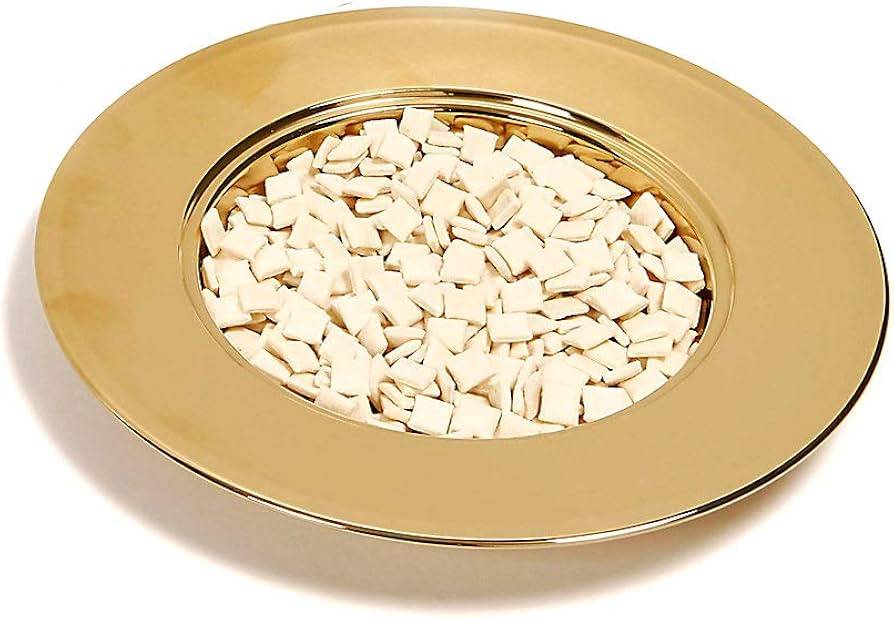
Amazon – 500 cups for $99
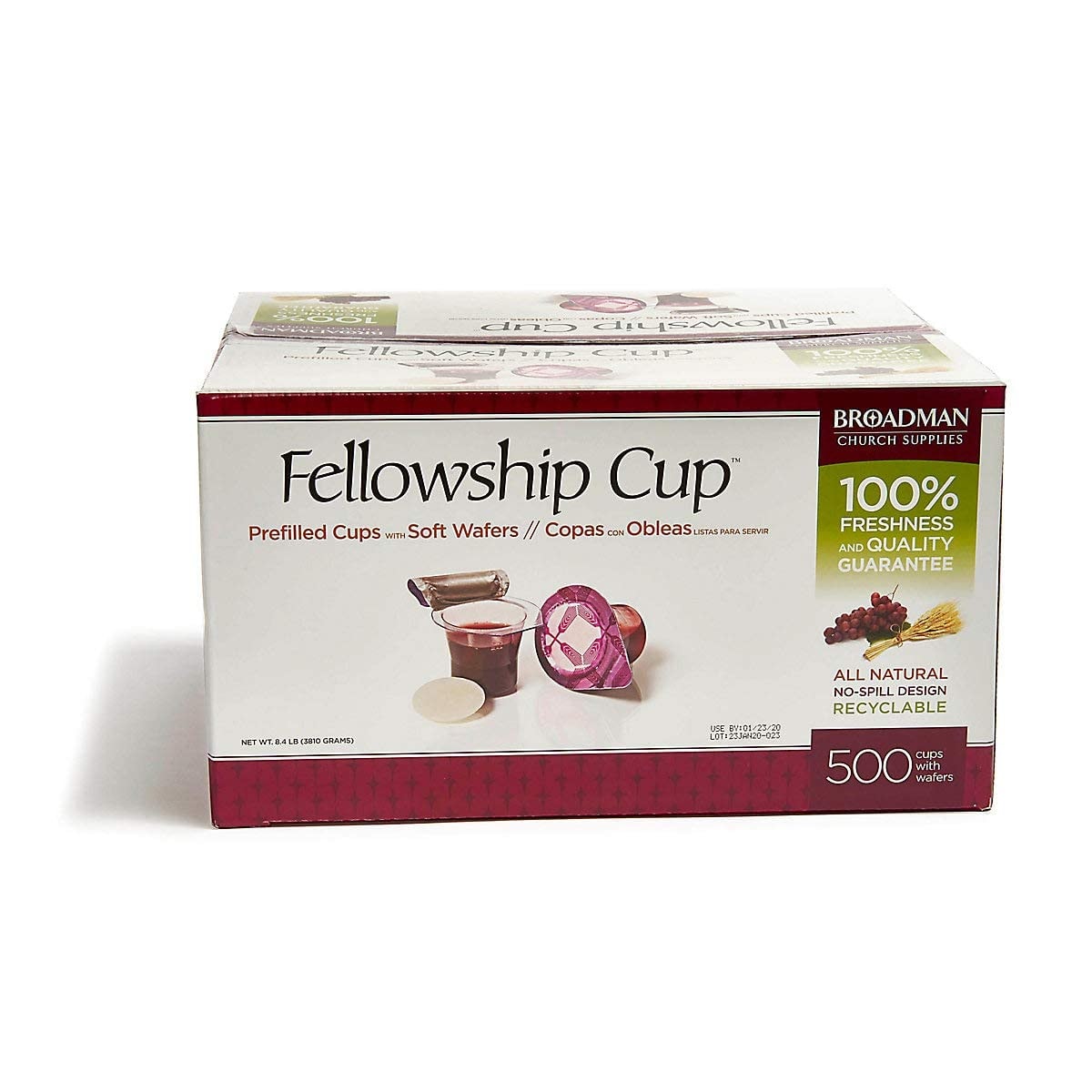
Options For Cups, Trays & Plates
Small cups are usually the easiest way to quickly distribute communion wine or juice to a large auditorium of seated people. Some traditional ministries choose to use clear, glass cups for this. These create a more meaningful experience, but are sometimes pricey and require washing, drying, and careful storage after each use.
It’s more typical to use clear plastic cups that are specifically designed for one-time communion use. Most recently used are the pre-filled plastic cups of juice that also include a small wafer in the lid. These have a more manufactured appearance, but are without a doubt the easiest method for taking communion with a large group of people.
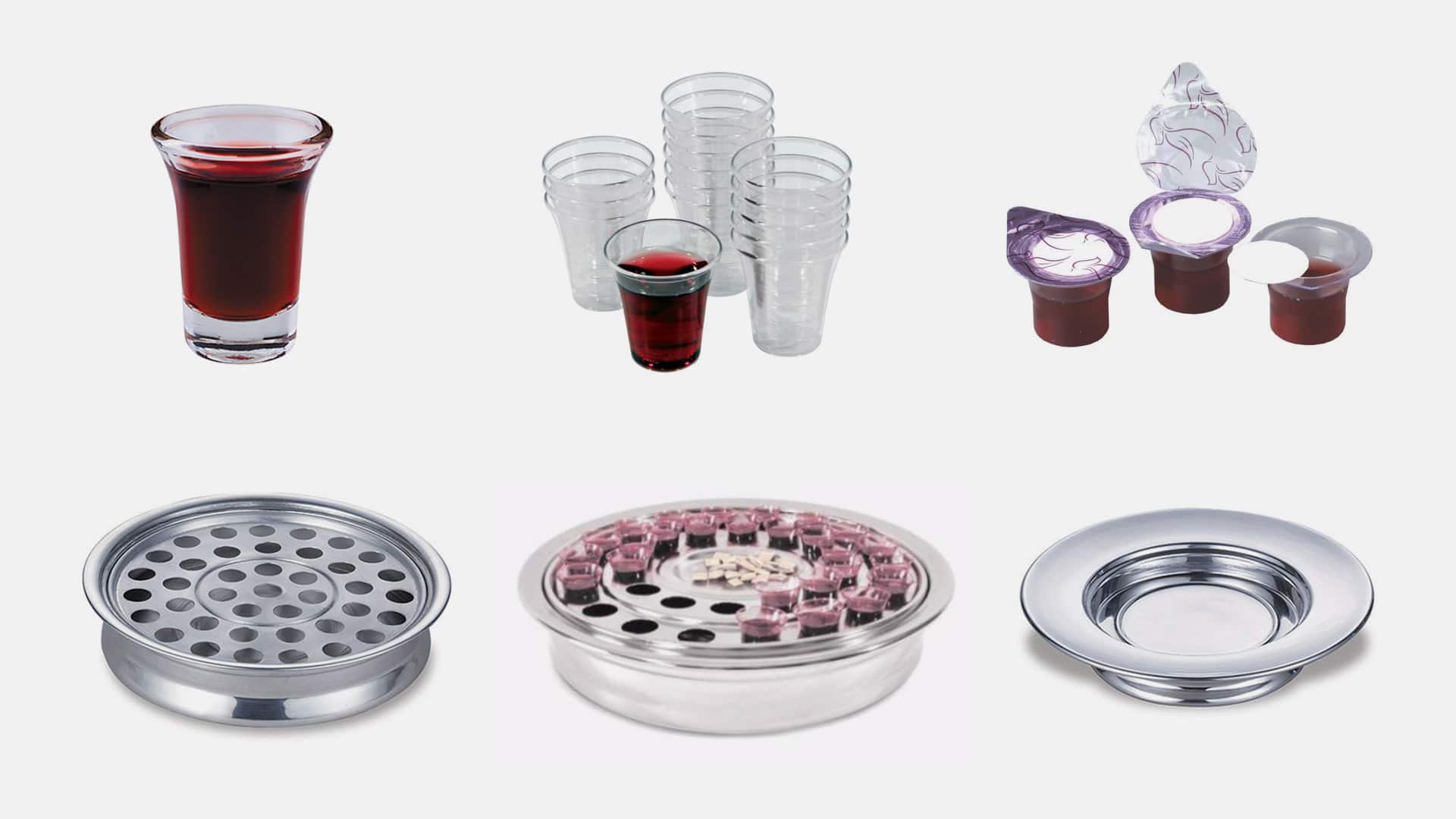
Concordia Supply – 1000 cups for $17.99
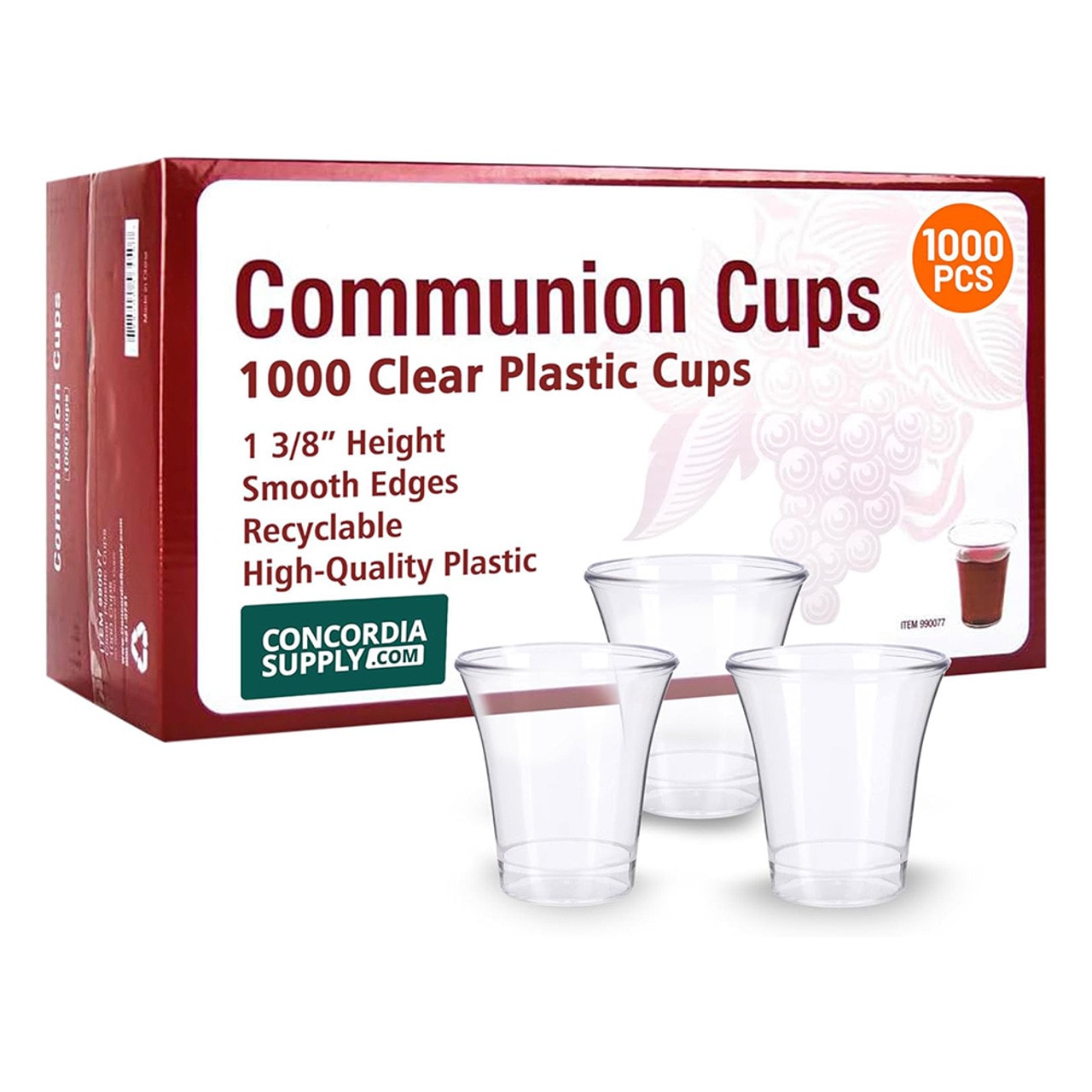
No matter which cup you decide to use, you’ll need to use a tray to be able to easily pass it to crowds of people. Additionally, you’ll need a plate to pass the bread to each row. To make this process easier, there are even trays available that can hold both cups and bread. These combined trays are great for enabling you to only have to pass down a row once.
Distributing The Elements
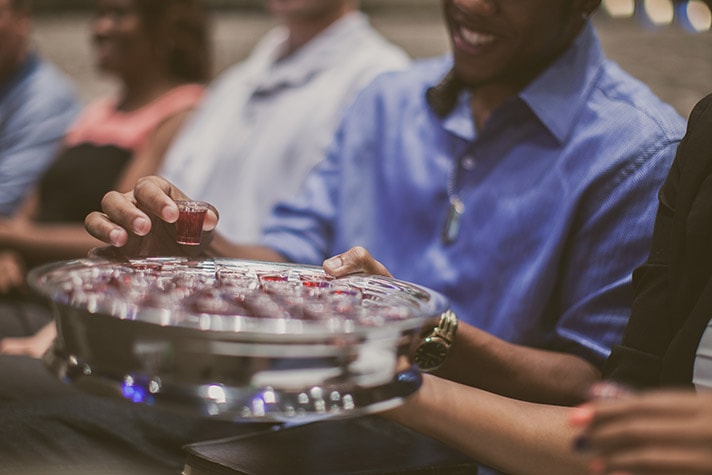
Because communion has been practiced in the church for so long, there are countless methods for how to partake. In the Western church where the elements must be distributed to a large number of participants, there are three popular methods. Some churches choose to serve bread and wine from the front of the auditorium where church members walk and approach the front at a designated time to consume the bread and drink.
In contrast, many other ministries have participants remain in their seats and use the cups and plates to distribute the materials. Lastly, some churches choose to give their participants their bread and drink to hold as they enter the auditorium or have it waiting at their seats. No matter how the elements are distributed, it’s important that it is done with care and reverence.
Leading A Congregation
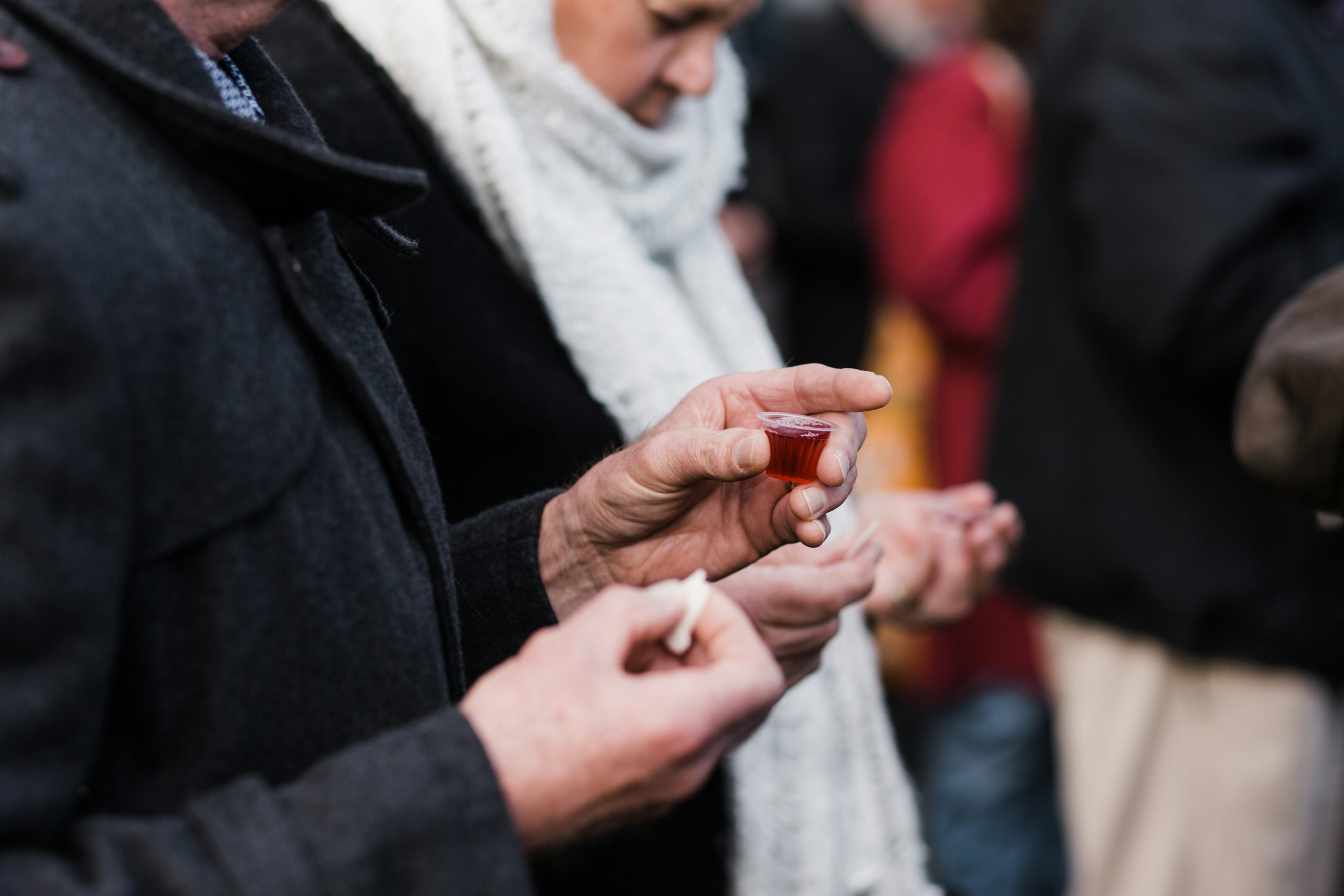
Just as there are many options to serve communion, there are many ways to lead a congregation in taking communion. The important thing to remember is that this is a time of worship. It’s a time of remembrance, celebration, and reflection.
One of the most popular methods for leading a church in communion is done as follows:
- Begin with the reading of Scripture that will remind of the Lord’s death, burial, and resurrection. Examples of this are Psalm 22, Isaiah 53, Mark 15:21-29, John 19, 1 Corinthians 15:1-8, and Galatians 2:16-21.
- State that communion is for any person who has believed in or trusted the Lord Jesus Christ alone for his or her salvation. Remind that is it also good for a person to examine themselves before the Lord in this moment. (Because of this, some people in the audience may choose not to partake.)
- At this time, have your ushers or deacons come forward to pass the bread and juice to everyone in the congregation, asking everyone to wait before consuming either.
- At this time, read 1 Corinthians 11:23-26 from scripture telling of how Jesus led his disciples in the first communion.
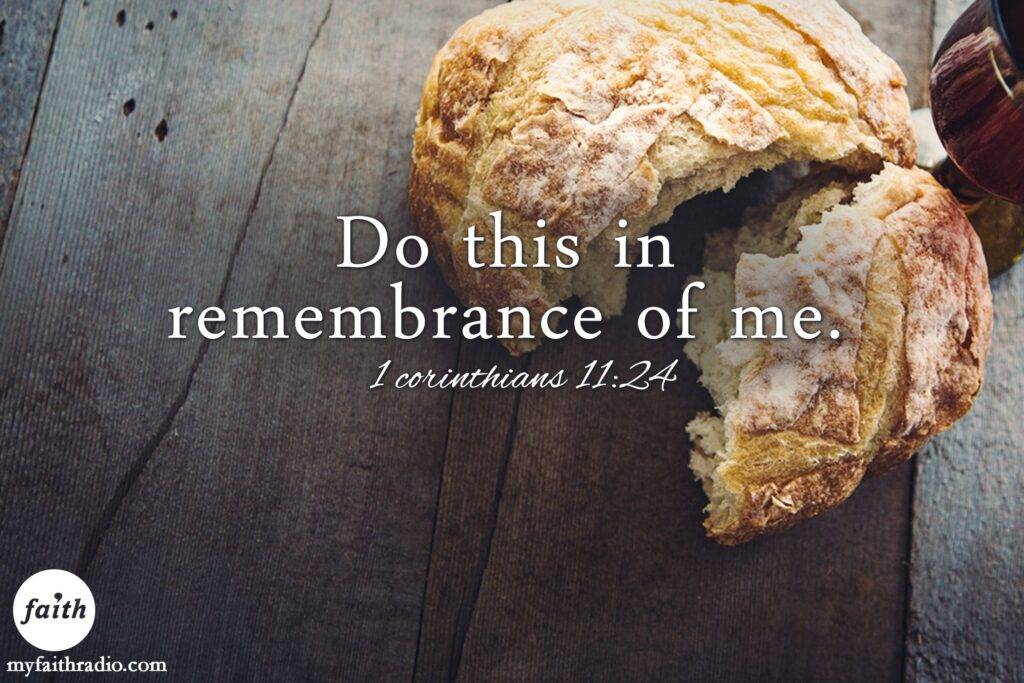
- Then, lead the congregation in prayer thanking God for the bread, which represents His body broken for us. (Many ministers choose to have the audience collectively break the bread or wafer together in this moment.) State how Jesus said, “Do this in remembrance of me,” and proclaim, “let us eat together.” Then eat the bread as a group.
- Ask everyone to prepare their cup of juice. Then, lead the congregation in prayer thanking God for the cup, which represents His blood shed for us. State how Jesus said, “Do this in remembrance of me,” and proclaim, “let us drink together.” Then drink the juice or wine as a group.
Music & Screen Imagery

Some churches choose to create a somber, reverent moment for communion by having a silent environment. Other ministries use this as an opportunity to have their band play and sing to create a more worshipful atmosphere.
Another option for music is to use a prerecorded track so that everyone in the room has their hands free to participate in the Lord’s Supper. No matter the background noise that you prefer, it is important that it not take away from this holy moment.
Since most churches now have screens available in their sanctuaries and auditoriums, whether projection, LCD television, or LED panels, it makes sense to include them in these moments! By displaying imagery such as crosses, communion elements, depictions of Jesus, or simply meaningful words, you can make this a special moment in the service.
Quiet Reflection
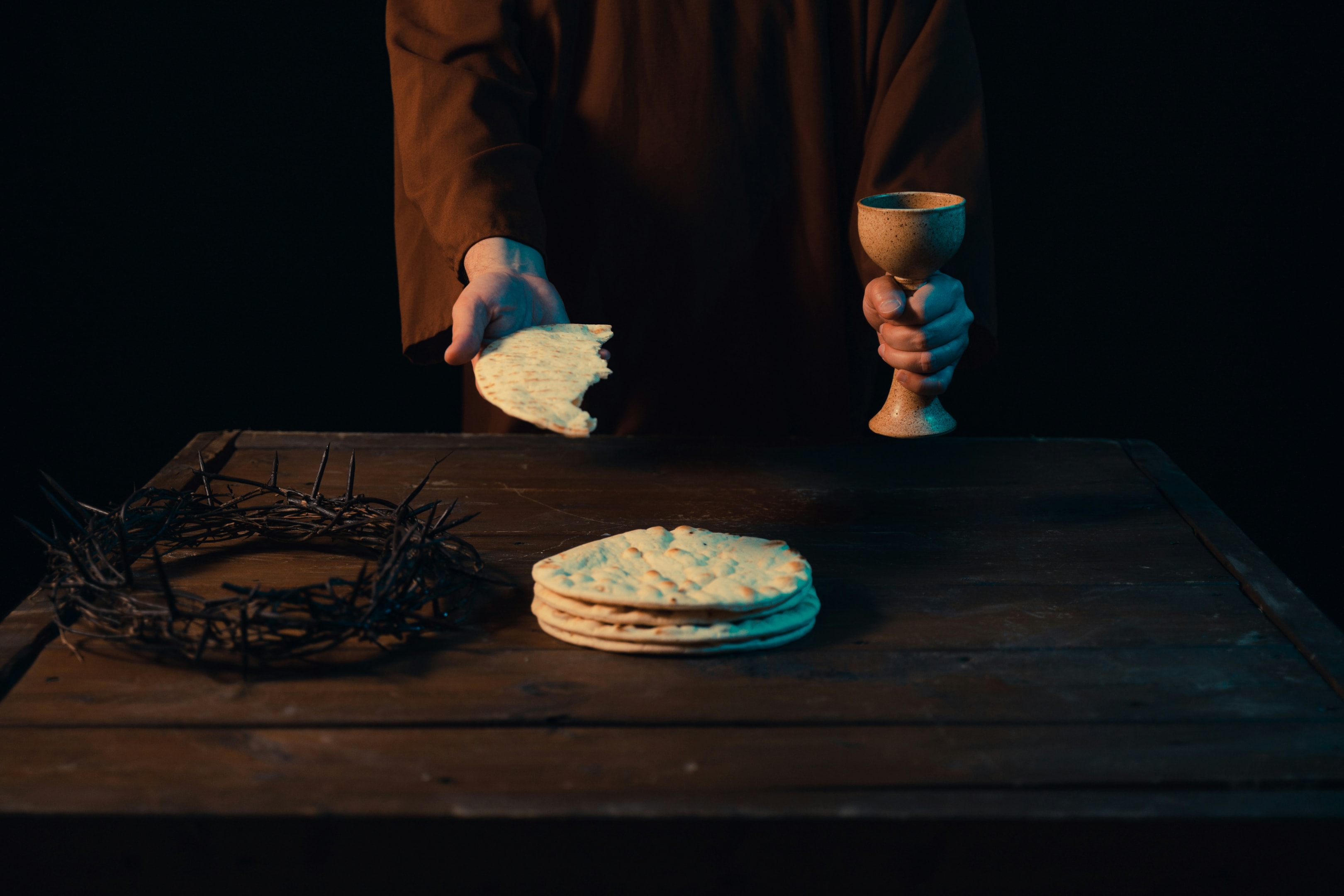
The elements that you choose for you congregation are dependent upon your own choices. It may be up to a budget, or availability. Communion is also typically taken at the end of a service to allow as much time as you need. Make sure that everyone that involved in helping knows the plan. A lot of churches will now have gift bags of prepared cups as people walk into service. The congregation then holds onto these elements until it’s time. This allows less movement when the time comes.
Prepare in prayer and let God guide you through this Holy moment. Allow enough time to complete each element, and we hope that this has given you more insight in how to lead communion.

